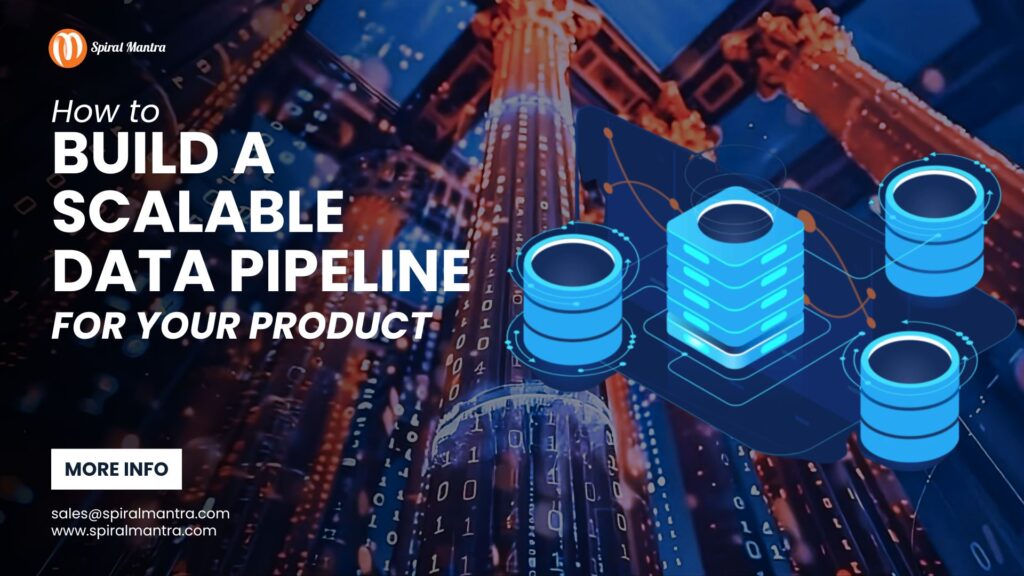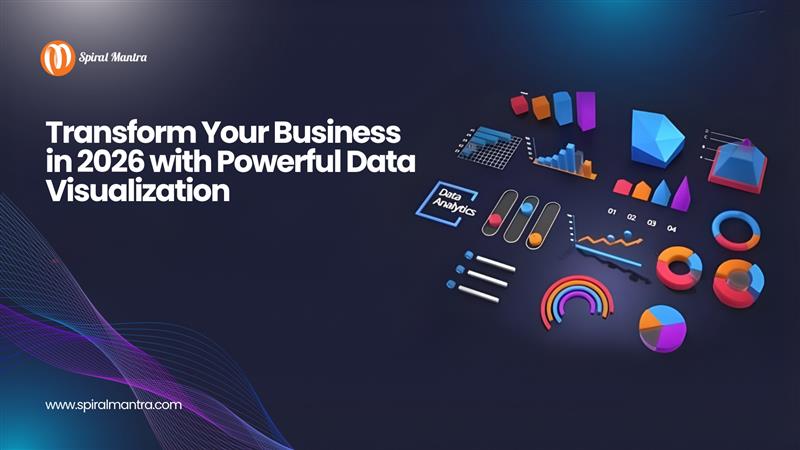From Raw Data to Insight: Creating a Reliable Data Pipeline
If you are a product-focused business, you will likely need a data pipeline to drive your decisions and innovation. A data pipeline is a reliable pathway for getting unstructured information from an unprocessed source to insightful and actionable analysis. The pathway may seem like a simple process, but it encompasses the steps in which the information travels from collection to action.
This write-up aims to show the proven steps to build a
scalable data pipeline as well as guide you through the services that Spiral Mantra offers in data engineering & analysis. So keep yourself engaged with the post!
Latest News in Tech Trend
Generative AI excels at the usage of machine learning by opening a door of opportunities in content creation in the form of audio, images, videos, text, etc. Going ahead with the latest update, now it can be useful to efficiently streamline the way of
data pipeline management. Being the leading professionals in the industry, Spiral Mantra Data Pipeline services are the best one can ask for with astounding precision in sub-domains like big data and cloud orchestration.
1. Go Through the Need for a Scalable Data Pipeline
Within the ETL process, it takes in raw information from different sources at the ‘extract’ stage, processes it, and then sends it into a system where it becomes storage-ready at the ‘load’ stage. Most enterprises of any significant size capture a ton of information on the back end, often more than they even realize. The ability of the system to handle larger workloads and more complex information as business scales is crucial.
Scalability means that the system works smoothly as it is scaled up. With scalable pipeline tools, you’ll be confident that your system will keep running well even as your product grows in popularity. It allows you to process more unmatched figures, support more users, and perform more operations.
2. Key Components of a Scalable Data Pipeline
To construct scalable information, it is useful to familiarize oneself with the constituents of a pipeline—we'll call them important stages:
- Data Ingestion: The first step is to take details from APIs, databases, third-party integrations, and other sources. It is important to design ingestion for both batch and real-time data.
- Data Processing/Transformation: Before they can be analyzed, raw unstructured details often need cleaning, formatting, and conversion into a usable format. This step should be optimized to handle varying efficiently and without sacrificing the quality of it.
- Data Analysis: Now that you’ve got all the required details, you want to do something with it. To be truly useful, AI applications often need to work with large amounts of data. Here, scalability means that your storage, whether in the cloud or via custom servers, needs to be able to scale to meet your needs now and in the future.
- Data Orchestration: In this category, we find the scheduling, management, and monitoring of the data pipeline that have components for automating these steps in order to ensure seamless operation of the system as it grows in size.
3. Basic Steps to Develop a Data Pipeline (Extract, Transform, and Load)
To design a large-scale data pipeline, you would want to be systematic – so here goes.
a) Define Business Requirements
The first is to get a clear picture of what your product needs. If you’re in the business of collecting and organizing details, what are the needs of said collection, specifically? How often does this unfiltered information need to be processed? For what sort of purposes should it be processed? Defining the particular requirements of your pipeline, in this sense, will help you get a more concrete grasp of the structure of the pipeline and the collection of technologies that need to be applied.
Brownie post to read and enjoy Why use Kubernetes to implement MLOps
b) Choose the Right Technology Stack
The size of your pipeline directly relates to your technology stack selection. For ingestion, go with Apache Kafka or Apache Nifi for real-time streaming. For processing, Apache Spark or Flink for large-scale distributed data processing.
Scalable big databases like Amazon S3, Google BigQuery, or Apache Cassandra are all good choices for storing. These systems expand when you expand your information, so you’re not stuck on an outdated system.
We leverage tools and technologies as industry standards to engineer a custom pipeline that caters to the necessity of your product while keeping in mind the scaling demands as your business grows.
c) Build for Automation
Automation is another critical factor in scalability. Your data pipelines should run 24/7/365, and they should be fully automated. This implies that the ingestion and loading (ETL) processes are automated, with no human involvement in starting or closing the workflows. You can use purpose-built workflow automation solutions like Apache Airflow to automate, monitor, and scale your data pipelines.
Spiral Mantra specializes in helping you automate the system so you can stop doing, say, clock-cleaning long enough to think strategically about how you’re going to scale your business.
d) Optimize for Real-Time Processing
If your pipeline can analyze data in real-time, you’ll be in a good position to make more effective business decisions. Today’s business environment is fast-paced, and in order to take timely action, it requires real effort. If the pipeline features real-time capability, it can process data as it comes in. This means it can provide figures that are up to the second.
If real-time processing is a requirement, a tool like Apache Storm or Kafka Streams can be added for the completion of further processes. Spiral Mantra manages such systems for many of our customers so their businesses can take action whenever changes occur.
e) Ensure Quality and Security of Your Data
So the quality of information flowing through any would-be scalable pipeline – especially right at its inception – is absolutely paramount. There must, for instance, be rules in place to verify, cleanse, and de-duplicate incoming details. Checks must be built in so that erroneous results are flagged and then handled by relevant ‘error handling’ code.
Security is another important consideration. As more data flows through your pipeline, the likelihood of a breach or leak of details increases.
Spiral Mantra’s data engineering services endeavors are designed to incorporate security measures into every step of the pipeline to protect sensitive business information.
4. Challenges That Might Trigger Your Workflow
While building a data pipeline offers great benefits, there are several challenges to consider:
Volume of Data: As information gets larger, it might continue to load into a system faster than it can process or store it – i.e., it might get clogged up (due, for example, to a database not working properly or as a result of not judiciously allocating resources such as memory or disk space).
Cost management: Scalability comes with a cost, especially with cloud services or ready-made tools. Finding the right solution between scalability and efficiency is a difficult path to navigate.
Complexity: A single pipeline is composed of three-four components and technologies. Mastery requires knowledge of
data engineering, cloud computing, and
DevOps.
Spiral Mantra offers end-to-end solutions to overcome these obstacles, including data pipeline architecture, ongoing support, and compliance while minimizing complexity and cost.
Conclusion By Our Writer's
If you are bringing a product to market that uses and synthesizes raw form details for innovation or engaging customers, it is imperative to establish a scalable data pipeline. Make sure you allocate the right tools, technologies, and expertise – so that your business grows as your product does.
Whether you need help at one point of the data life cycle or require assistance with the entire system, Spiral Mantra has teams of individual experts to ensure that your target is met. App development to integrate a product into your data infrastructure works well with our services and equips a business with a comprehensive solution for digital transformation.
To learn more about how we can help you build a scalable data pipeline, reach out to us today.


